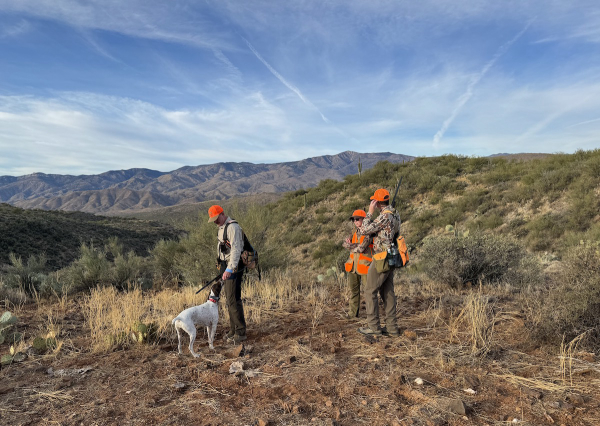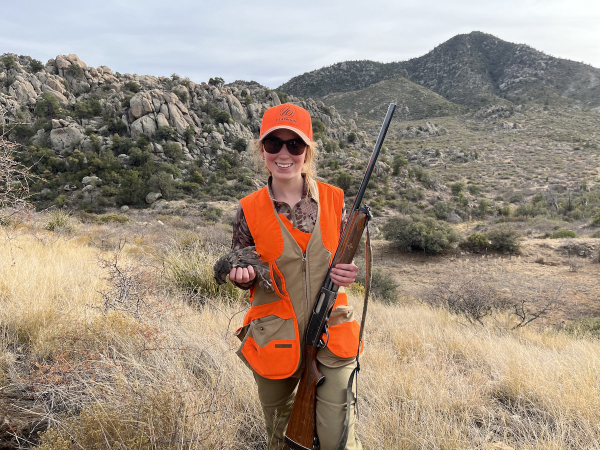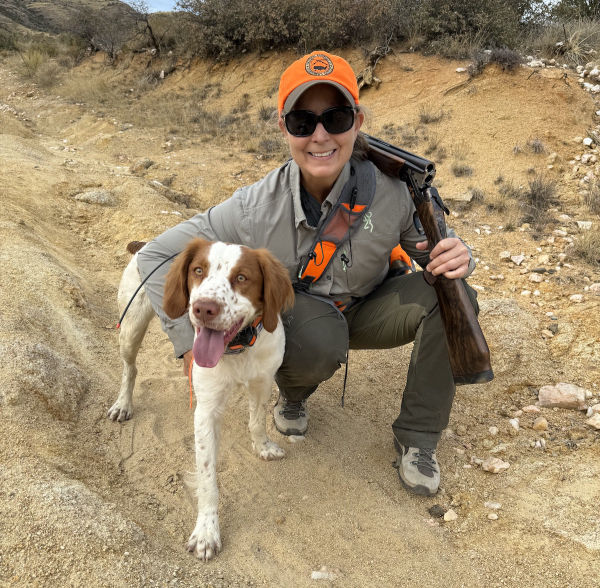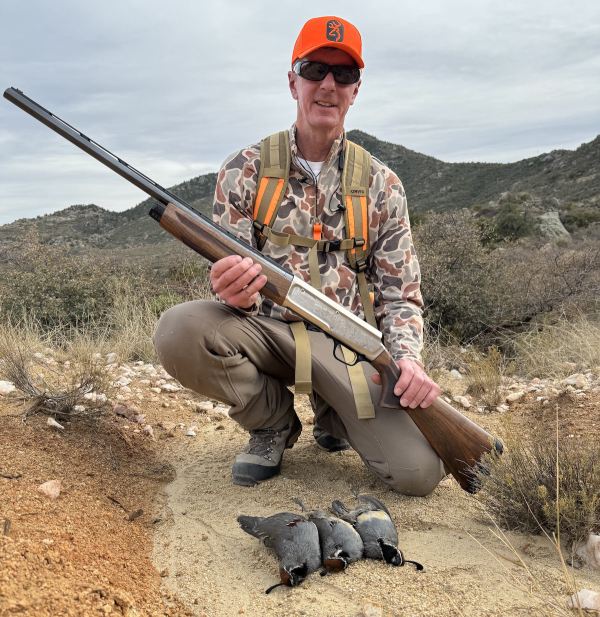
Editor’s Note: This article originally appeared in the Winter 2025 issue of The Upland Almanac and is reprinted here with permission. To subscribe to The Upland Almanac visit UplandAlmanac.com
Miles of sagebrush and grasslands slipped past during the 10-hour drive between Bozeman and Denver.
Sophie’s first semester at Montana State had gone remarkably smoothly, though those months hadn’t been easy for me. Far beyond the challenge of empty-nesting, I had unexpectedly lost a dear colleague in late September. Barely a month later, my aunt and father passed away within five days of each other. Then my mother’s childhood home, a 125-year-old farmhouse that had been owned by the family since the early 1900s, went under contract to a developer and was slated to be torn down. Only a few weeks after all the chaos, this mother/daughter time in the car was precious.
“Did you know that the first thing Grandpa shot when he was a small boy was a native bobwhite quail?”
I had just finished transcribing the voice recordings my dad had left us, and one of the last was his memories of becoming a hunter. Those days wandering the woods behind his childhood home in New Jersey left their mark on him as he went on to become a renowned professor of wildlife ecology at Rutgers University. Being a hunter had always been part of who he was, but that first bobwhite was a new story for me.
The native bobwhites were long gone by the time I was learning to hunt on our farm, and upland bird hunts could only be found on preserves. But my love for Brittanys started in my teens with a little female dog we had that my dad had hoped would go afield, but they never had any birds to hunt. Dad always loved to hear the stories of our escapades on wild grouse and pheasants with our Brittany, Mesa. That dog, now 13, got me back in the field and built the love of hunting in Sophie.
“Are you excited for the next few days?” I asked Sophie as we cruised through the middle of Wyoming. We would get home late that evening, grab our gear, dogs and my husband Casey and then turn around first thing the next morning for another long drive to our final destination outside of Phoenix.
Not many college freshmen would be up for such a trip after a long, grueling semester of Calculus 3, Honors Chemistry and two core engineering classes.
But having carried our pheasants in her oversized upland vest since she was six years old, Sophie would never turn down an adventure. Hunting wild birds in the West was just something we do, and we love to do it together as a family.

“Well, definitely not thrilled about the drive,” she said, “but, yeah, I’m super excited about chasing those desert quail. Particularly since it will be my first time hunting with Gauge.” As Mesa aged and developed a breathing disorder, we had gotten a new Brittany right after Christmas and had been giving him quite a rookie season. Gauge started with pheasants and grouse in Montana and now was headed on this Arizona quail hunt.
After a few moments, she spoke sadly. “It is kinda ironic about Grandpa’s bobwhite. I’m sure he would have wanted to hear all about this trip.”
During long drives home after hunts, we would spend hours on speakerphone telling him every little detail about the experience. The realization that we wouldn’t have that this time slipped each of us into silence, her throwback country music playlist our accompaniment as the miles slipped away.
In Denver, snow had covered the ground, and it lingered to somewhere past Santa Fe. Somehow, the 12-hour drive to Phoenix turned into 14, and our beds in the hotel were a welcome respite. It was dark at 6 a.m. when we left the next day, but not dark enough to conceal from our eyes the wild burro roadkill on the corner in this suburban neighborhood. That was unexpected. We met our local friend Josh Avey at the Walmart and headed north.
December mornings in Arizona are cold — desert cold — but the sun rose on a clear and beautiful day, and we knew it would get warm quickly. Our first quarry were Gambel’s quail on Bureau of Land Management lands not too far from the city’s edges.
We parked at a stock tank along a dry riverbed, grabbed extra bottles of water, turned the dogs loose and headed straight up the side of a hill. Josh and Casey are long-legged, each well over 6 feet tall. Sophie and I scrambled to keep up and soon learned about avoiding catclaws and the seemingly thousand other plant species that would grab you if they could.
We split up, Casey and Sophie heading off with Gauge while I stuck with Josh and his two German shorthairs. Traversing the steep slopes, Josh and I talked about our dads — both avid hunters and lovers of the great outdoors. Both had recently passed on. Healing comes in these shared memories and carrying on the traditions of times together with good friends in the field.

After an hour, we met back up with Casey and Sophie, and while we all saw some birds and a few shots were fired, none of us filled our game bags that morning.
During our much-needed lunch break, we shifted strategies and moved a few miles west toward another stock tank in a former cattle gathering yard, an area with a rolling creek bottom flanked by steep mountains. At the tank, water dripped from the windmill well and green grass grew in the soft soil where the water had overflowed.
We heard them before we saw them.
A small covey of Gambel’s quail darted off into the dense brush that enveloped the vacant corrals. At least we knew they were there.
This time Sophie joined Josh and his dogs while Casey and I took Gauge in the opposite direction. While maybe not as bad as their scaled quail cousins, Gambel’s quail are runners, and our year-old pup was having a hard time figuring them out but definitely knew that something exciting was about to happen.

The wagging of his short tail increased in velocity before a clatter of wings erupted out of the scrub, and Casey, always an incredible wing shooter, dropped two crossing birds with his semiautomatic shotgun. Not as prepared for their speed and distance, I missed.

Casey gathered one more bird a short time later, and though we couldn’t hear the shots, Sophie and Josh found their own coveys and each shot a pair. We ended the day with tired but happy dogs, Gauge curled up at our feet as we plucked the birds. Though Mesa could no longer join us in the hunt, she was certainly excited to fill her nose with their feathers.
— Jodi Stemler
Hunting was always a part of her roots, but it was her daughter’s enthusiasm and the opportunity to hunt as a family that brought Jodi Stemler back to the ranks as a “re-activated” hunter. Her natural resource management degree from Rutgers University provides a foundation in ecology to her work as a communications and policy consultant for national hunting conservation organizations. It also provides a unique lens through which she views her time in the field and conveys those experiences within her freelance writing.